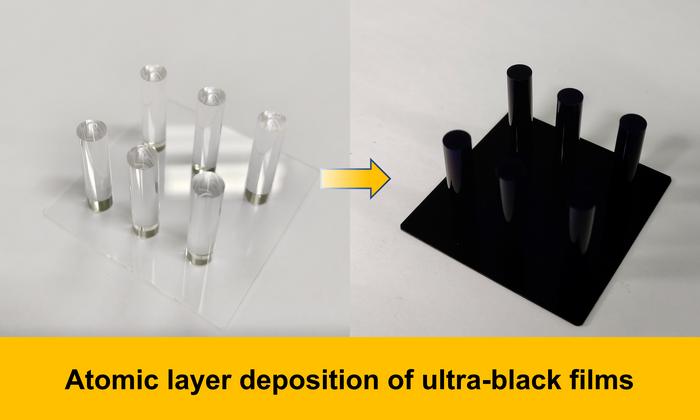If you, like me, have dabbled with telescope making you will know what a fickle friend light can be. On one hand you want to capture as much as you can (but only from the object, not from nearby lights) and want to reflect or refract it to the point of observation or study. What you most certainly don’t want is stray light to be bounced around inside the telescope so components (except the mirror!) are sprayed as black as possible. Unfortunately black paints tend to be quite susceptible to damage and struggle to cope with the harsh conditions and cold temperatures telescopes are subjected to. A team has recently developed a new atomic-layer deposition method which absorbs 99.3% of light and is durable too.
A team of scientists from the University of Shanghai for Science and Technology and the Chinese Academy of Sciences have recently published a paper in the Journal of Vacuum Science and Technology. The paper announces that they have engineered an ultrablack thin-film coating which boasts the remarkable light absorption rate of 99.3%. The technique is tailored for coating aerospace grade magnesium alloys (not a lot of help for my telescope but there is hope) and the result is a coating that is durable and capable of withstanding harsh environmental conditions.
Of course, this is designed for telescopes operating in the harsh environment of space rather than the cold winter nights of Norfolk in the UK but it will certainly help with professional observatories atop mountains too. Current coatings like vertically aligned carbon nanotubes or black silicon tend to be easily damaged needing repair and leaving contamination that has to be carefully managed.
Another problem is the often difficult and intricate shapes and curves that the black coatings are to be deposited upon. To overcome these problems, the team explored atomic layer deposition (ALD). Items to be coated are paced in a vacuum chamber and exposed to different gasses in sequence which will adhere to the object’s surface in thin layers. It’s a technique not too dissimilar to aluminising a telescope mirror that is placed inside a vacuum chamber before allowing the aluminium to be deposited on the mirror surface.
The vacuum coating method is far easier to apply to intricate shapes than previous techniques. To build up the layers, the process uses alternating layers of aluminium mixed with titanium carbide and silicon nitride. The two materials work well together to stop nearly all light from reflecting off the coated surface.
During the test phase, the team tested wavelengths of light from violet light at 400 nanometers to near infrared at 1,000 nanometers and found average absorption levels over 99% across all wavelengths. The coating seems to withstand heat, friction, damp and extreme changes in temperature well so it is most certainly suited to space instrumentation. The team haven’t given up yet though, they are now working to improve the performance of the material.
Source : Ultrablack coating could make next-gen telescopes even better


When can we buy this in a spray can for home use…(I know the answer)